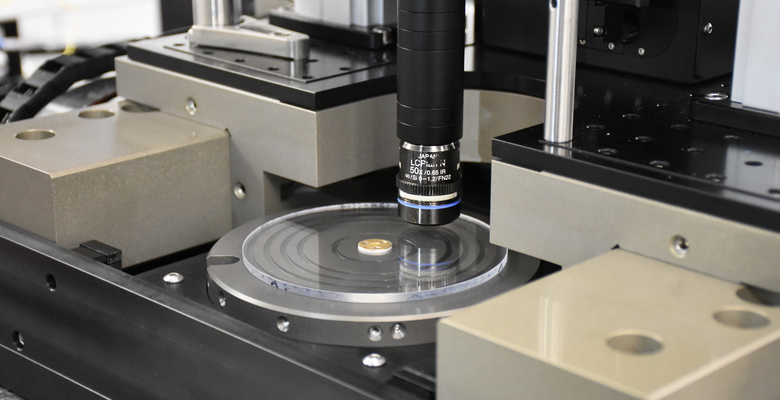
Clay, parchment, papyrus, paper
In 1849 during the excavation works in the ancient Assyrian capital of Nineveh British archaeologist Austen Henry Layard discovered a library of cuneiform tablets compiled under the rule of king Ashurbanipal in the VII century B.C. It was the greatest of ancient libraries. Tablets made of terracotta survived thousands of years without any damage and even the fire only made them harder without damaging the writing. The importance of that discovery is hard to overestimate – by deciphering the cuneiform the scientists discovered the culture of Mesopotamian civilization.
But clay wasn’t the only material – already in the Mesopotamian kingdom and Ancient Egypt people used parchment and papyrus to write texts, later paper was added. Such materials could store records of dozens or hundred years, but were sensitive to water and fire. The Alexandrian Library disappeared in the fire thus becoming a sad example of fragility of knowledge.
By late Middle Ages the need for material for making records and printing texts moved paper to the forefront. By early XX century industrial technologies made it a lot more inexpensive, but at the same time sharply accelerated the speed of its aging. My types of modern paper degrade in a matter of several decades.
Digital media
In the computer age, digital media gained in capacity by billions of times in the course of a few decades. A smartphone’s memory could hold a library of dozens of thousands of books. The speed of data recording and reading grows as fast. Short life cycle of such media remains the Achilles heel of digital technologies. Even the most reliable popular types of digital memory age fast and are still inferior to paper in terms of the guaranteed term of data storage.
In general, the entire history of data storage media development has been accompanied by the shrinking of their lifecycle and remaining low level of resistance to extreme conditions. It is the reverse side of accessibility and affordability.
Magnetic discs and flash memory can reliably store data only for a number of years and are not resistant to powerful electromagnetic fields and temperatures over 100ºС. Optical discs can store data from 3 to 20 years, despite the much longer service life claimed by the manufacturers. The data stored on discs is gradually erased under the influence of temperature over 50–70ºС and even sunlight, not to mention harder radiation. Currently, the most reliable data storage media are streamers that records data on magnetic tape. Such devices are used for archive storage, but for them the term of information storage is 15-30 years even in strictly observed environmental conditions. Periodic data copying and upgrade of the data storage media require an expensive infrastructure and constant investment in servicing the electronic archive.
Today the issue of data preservation is very important for individual people and for organizations, companies and states, as well as for the entire humankind. An increasing number of research centers and large companies are turning to the problem of highly stable digital memory.
In 2010 the development in the USA of the Millennial Disc and its launch on the global market was an important step in the direction of long-term data storage. Unlike ordinary CDs and DVDs, where the data is recorded in the organic or semi-conductor layer, the coating of the M-disc is made on the basis of glassy carbon. The developed technology allows the researchers claim a guaranteed service life of a thousand years. However, the properties of glassy carbon and the traditional polycarbonate substrate make the disc sensitive to high temperatures over 120ºС.
Glass-based media
Developing data storage media resistant to external influence requires the use of more stable materials. In the era of Ashurbanipal terracotta was such a material. In the early third millennium of the new era quartz glass is considered to be one of the most attractive materials – it is the widely known in science and technology glass SiO2. That glass is extremely heat resistant. It can withstand not only heating, but also subsequent sharp cooling from the temperature of 1000ºС.
Back in 1996 a research group headed by Eric Mazur of Harvard University proposed a method of data recording on quartz glass by creating local defects via a focused beam of femtosecond laser. Laser radiates ultra-short pulses 10-13 s in duration (dozens or hundreds of femtoseconds). When a beam of femtosecond pulses passes through a transparent material the pulses are absorbed only near the beam focus point, where the intensity of the radiation sharply rises. That produces inside the material local defects of one to several microns in size. Thus, there appears an opportunity of creating a multilayer three-dimensional memory with a recording on up to dozens or hundreds of layers of data in the bulk of quartz glass. But in the 1990s the level of development of laser technology didn’t allow for practical application of the optical memory technology.
In 2003 a group of researchers from the Southampton University led by Petr Kazansky published their work dedicated to a new type of nanostructures, which appear in quartz glass under certain conditions of glass treatment by a laser beam – the so-called nano-lattice. Due to the periodically variable level of refraction the effect of birefringence appears in the nano-lattice. Such an effect is highly common in the world of crystals, but is not typical for glass due to the isotropy of its properties. The effect leads to the fact that the components of light passing through the nano-lattice polarized in parallel and perpendicular to its layers move at different speed. Thus, after passing the nano-lattice they are shifted against each other and such phase shift can be measured with a polarization microscope. Unique thermal stability turned out to be a most important quality of nano-lattices. In the temperature of 1000ºС they can survive for a few hours, in the temperature of 700ºС – for half a year, in the temperature of 400ºС for millenniums. At room temperature the calculated lifecycle is 1020 years, which is eternity for human history.
Ten years later the Kazansky group formulated the principle of multilevel super-stable optical memory on nano-lattices in quartz glass. Unlike the usual optical discs, which codes 1 bit in each point of the record, each nan-lattice is supposed to record several bits at a time, which are coded in two parameters of the nano-lattice – its orientation inside the glass and the size of the phase shift that appears between the components of the light that passed through it.
These characteristics can be manipulated by changing the parameters of the laser beam that records the nano-lattice. Multilevel coding provides a multifold increase in the density of recording, while the ability for multilayer recording of nano-lattices paves the way for an even greater capacity increase.
Project “Quartz”
In 2014 the Department of chemical technology of glass and glassceramic of the Russian Mendeleev University of Chemical Technology together with Prof. Kazansky received a grant from the Russian Ministry of Education and Science to perform research of laser micro- and nano-modification of glass and crystals. Shortly, that research was in great demand: in late 2014 project “Quartz” was launched by the Mendeleev University of Chemical Technology initiated and financed by the Foundation Prospective Studies. The project is aimed at creating the technology of optical memory on nano-lattices in quartz or other oxide glass with unlimited useful life for data storage.
To perform the task the Department of chemical technology of glass and glassceramic set up the Laboratory for Laser Nanostructuring of Glass.
If successful, the lab will be the first to develop digital data storage media not sensitive to natural aging that allows unlimited number of data reading cycles, has no special requirements for storage conditions, not sensitive to extreme climatic conditions, electromagnetic field, static charge, light with high resistance to mechanical stress, aggressive chemical environment, radiation and high temperature, including open flame.
This technology will not compete against flash memory or optical discs. Its market niche is the archival storage of especially important information. Such storage systems are in demand in state archives, government databases, large companies and medical institutions, libraries and film libraries. Some organizations working with large archives of digital documents are watching the results of the research performed at the Mendeleev University of Chemical Technology. High cost of the equipment and data storage media is offset by the drop in the cost of the infrastructure and the savings from not having to re-record the data on a regular basis. It is expected that similar to the first generation of CDs recording and reading will be performed separately. Expensive and bulky recording systems will function in specialized centers, while the cheaper and more compact reading systems will be accessible for many users.
Despite the simplicity of the principle of the recording, a number of complicated tasks have to be solved in order to develop a competitive memory storage technology based on nano-lattices. Super-stable storage of large volumes of data becomes meaningless if one cannot quickly record and read the data. The laws of physics have to be observed – the formation in quartz glass of highly stable nano-lattices resistant to external factors requires a lot more energy than recording on optical discs. Thus, femtosecond lasers of the latest generation with capacity of up to 10 Watt or higher will be needed for high-speed recording (they are dozens of times more powerful than the laser used in the optical disc technology).
According to the latest research the recording mechanism of the nano-lattice in principle requires more that one laser impulse, while for a significant phase shift in the light passing the nano-lattice requires a few dozens pulses. This increases the recording time of one point to dozens or hundreds of microseconds – which is too long by the standards of the modern recording devices, which record millions of bits per second. The length of recording can be compensated by selecting a material in which nano-lattices are recorded by 2-3 pulses or by creating a multichannel system of recording. It’s a separate complicated technical task.
Use of single-level recording can serve as an alternative solution – recording of 1 bit per point does not require the formation of a nano-lattice. One pulse can form a clearly distinguishable micro-defect, which leads to a gain in terms of the recording speed at the expense of the density of data storage.
The system of fast reading “inside light” from the storage media containing many layers of data also requires some original solutions - both in the optical scheme and in the electronic system of analyzing the signals it reads, which would allow instant decoding of recorded bits by separating them from the noise. This task is one of the central issues in the laboratory’s work.
The laboratory researchers do not limit their experiments to quartz glass. The Department of chemical technology of glass and glassceramic has been developing glass-like materials for many years. The accumulated experience allows the scientists search for glass that can outperform the quartz glass. The Department is looking at alternative variants of optical memory – for example, the recording via local formation of luminescent properties in glass, nano-crystals with high refraction characteristics, etc.
The research cycle and development of demonstration stands for recording and reading will be over in a year. That stage will be followed by the prototype development stage. A few years from now Russian super-stable memory systems will start working on permanent preservation of our civilization.
Sergey Lotarev, PhD in Chemistry, the Mendeleev University of Chemical Technology







